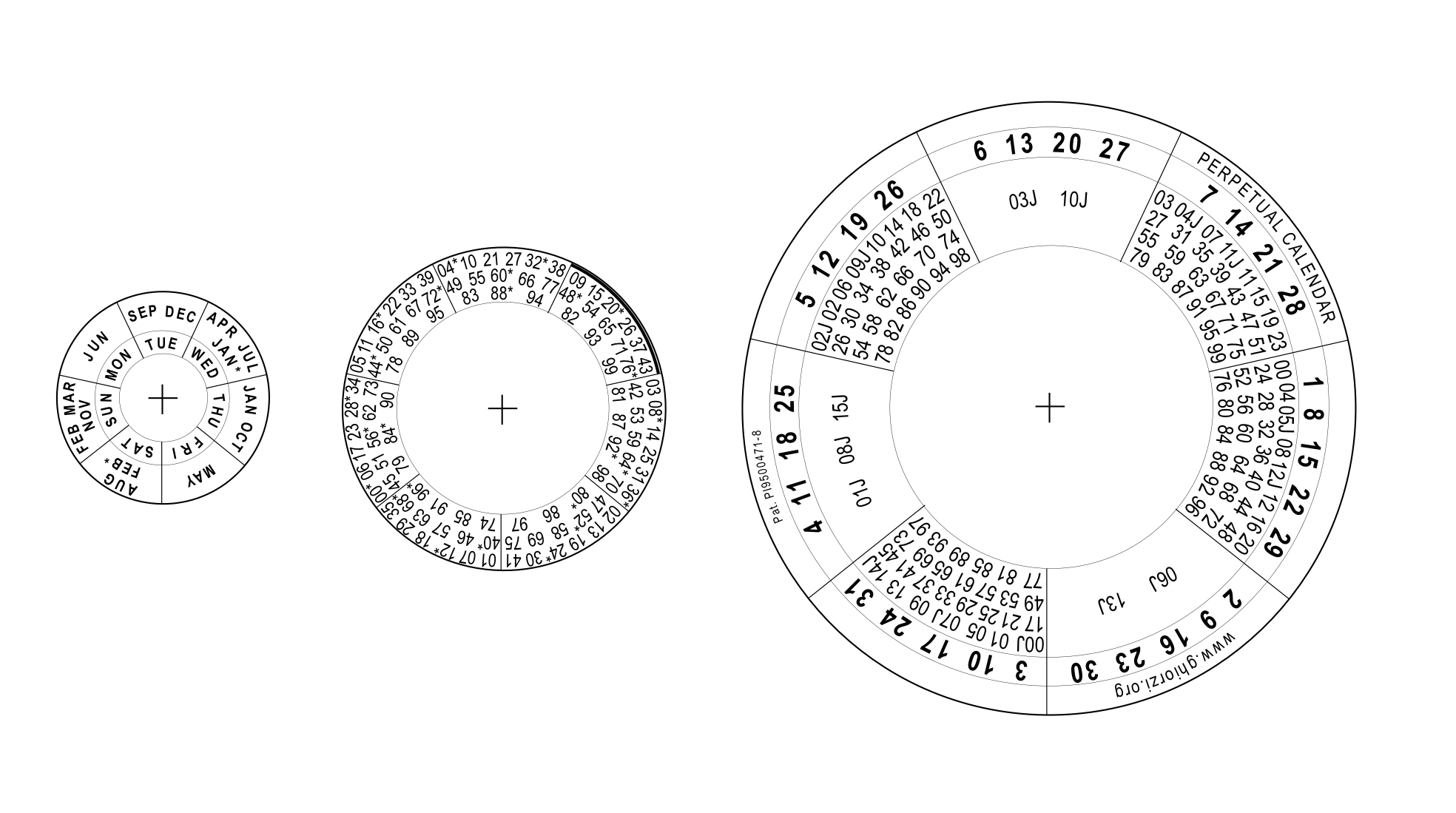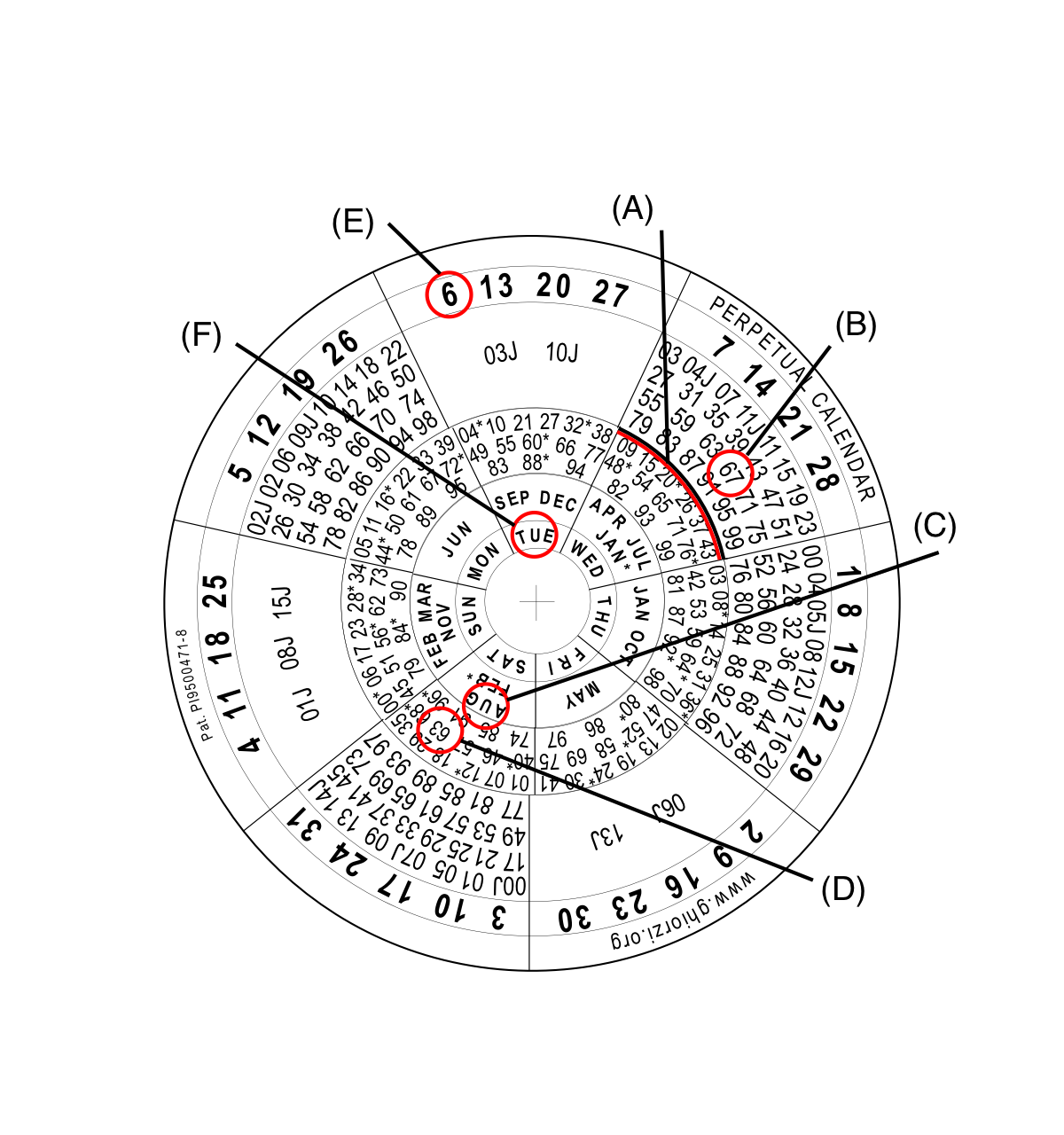|
PERPETUAL CALENDARS................ [Se preferir, veja a página em Português com mais detalhes]
See any year calendar (from 1 AD to infinity). We follow the catholic world rules. Therefore, you'll see in the year 1582, the transition year from Julian to Gregorian Calendar, we didn't have the days 5 to 14 in October month: Note: If you compare this calendar with the one in Microsoft/Office/Excel, you will find a difference in year 1900. This is a problem in Excel, that incorrectly considers 1900 a leap year. Any attempt to calculate former dates (before 1900 March 1st), starting from Excel calendar, will result 1 day mistake. The bug comes from Lotus 1-2-3 and was purposely implemented in Excel, in order to match both spreadsheets. You can display 1 to 4713 B.C. calendars, typing 0 for year 1, -1 for year 2, -2 for year 3 a.s.o. until -4712 for year 4713. See details at my page Julian Days. Notice that we're talking about hypothetical calendars, without historical value. Trustworthy historical registers only exist from 4th century A.D. The world smallest perpetual calendar! Look at the smallest (and unique) pocket perpetual calendar in the world, from 1 AD to infinity. Print it, cut out and join the three disks with an eyelet or a rivet.  This gadget comprises all thousand/hundred from 00 to 99, allowing, this way, the direct calculation of any past or future date, without any limit. All digits from right to left — from 5th — are indifferent for calculation. Example: Which day of the week will be August 6, 516763? (516763 - thousand/hundred=67 ten/unit=63). Place arch (A) under thousand/hundred 67 (B). Place AUG (C) under ten/unit 63 (D). You'll see that August 6 (E), 516763 will be Tuesday (F). Note that the outermost and the innermost disks show the whole wished month calendar. 
Beware: When you're working with Julian Calendar dates (until October 4, 1582), use exceptionally thousand/hundred numbers followed by the letter "J". In the countries where the Julian Calendar invaded the year 1600, 1700 and so on, it's enough to include 16J in 09J sector, 17J in 10J sector and so on. Also see other samples of pocket perpetual calendars, if you are an inquisitive person.
A bit of History...
Leap years
A timely reminder
Mental calculation of the weekday We know that 1901Jan1 was a Tuesday. Let's consider 1=Sun 2=Mon 3=Tue 4=Wed 5=Thu 6=Fri 0=Sat.
a) choose a date from 1901Jan1 to 2099Dec31 See a practical example:
a) 2013Mar27
a) 1940Apr17 *sevens out=the remainder of a number divided by seven The routine above, from 1901 to 2099, is the most searched one. However, you can calculate the weekday from the 1st year of the Christian Era to infinite, if you understand about secular non-leap years (1700, 1800, 1900, 2100, 2200, 2300, 2500 a.s.o.) and about the suppressed 10 days between Julian and Gregorian calendars (1582 October 5 to 14). We know that 0001Jan1 was, theoretically, a Saturday. Let's consider 1=Sun 2=Mon 3=Tue 4=Wed 5=Thu 6=Fri 0=Sat:
a) choose a date, from 0001Jan1 to infinite
*indeed we want to "subtract 1" but it's better to "add 6" (it's the same thing on "sevens out" operations)
See a practical example:
See another practical example:
See a third practical example, about 21-days-month (1582Oct):
|
© 20/05/1996 Atualizada em 08/03/2025